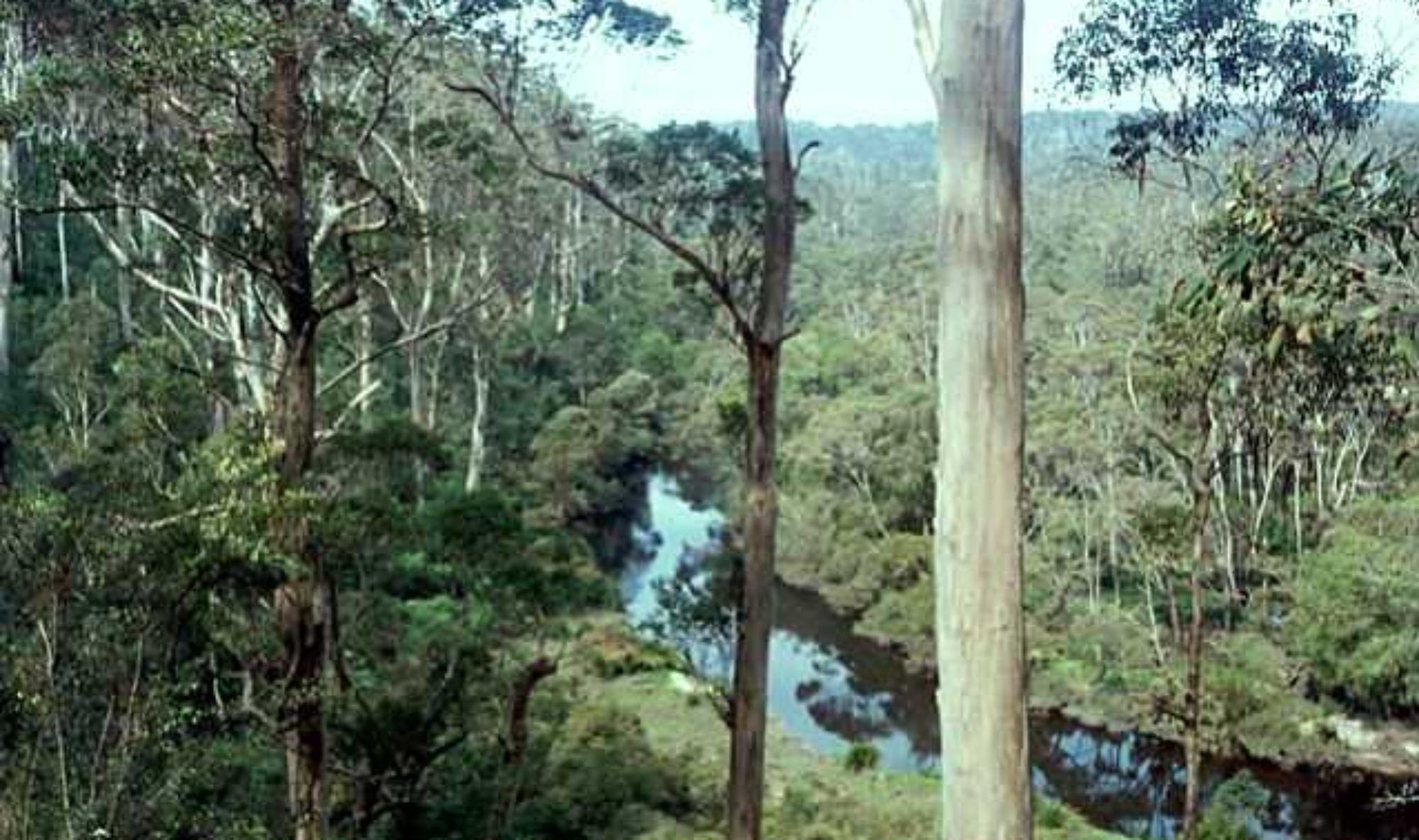Jarrah is a unique Australian hardwood renowned for its versatility. Its durability and strength make it an ideal timber for a range of structural and design applications, with timbers that display colours ranging from deep red to blonde.
Jarrah trees grow on the iron and aluminum rich plains of south-western corner of Western Australia, from the ranges east of Perth down to Albany. They are slow growing, their roots often reaching to great depths in search of nutrients and water. Their long, straight trunks, can grow up to 40 metres tall and 2 metres in diameter, creating beautifully coloured and grained timbers. The bark is rough with a fibrous texture and covers the entire trunk and smallest branches. The trees do not germinate from seed, but from lignatubers, large underground swellings that store energy and nutrients, allowing young trees to regenerate after bushfires.
Jarrah timbers reflect the hues of the Western Australian landscape. The heartwood varies in colour from rich reds to browns, while sapwood ranges from a pale yellow to orange. The texture of the timber is moderately coarse and even-textured grain, although some interlocked, wavy grain may feature, creating interesting fiddle-back figure. This makes it an appealing architectural and design material.
Jarrah’s natural properties include a high resistance to weather, rot, termites and even marine borers, making it valuable for a range of outdoors uses. Its density also makes it fire resistant. It can be used in wharf and bridge construction, railway sleepers, cross arms, poles and piles. Construction applications include general house framing, flooring, linings, joinery and fencing. Jarrah’s decorative qualities make it prized for use in furniture, turnery, joinery and parquetry.


